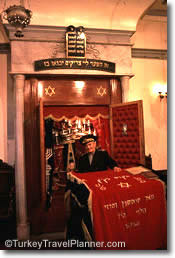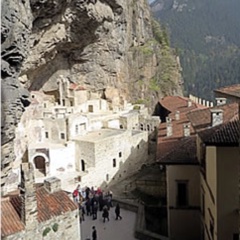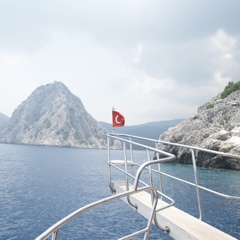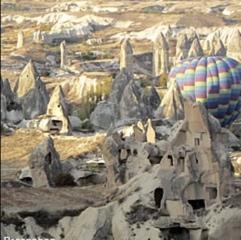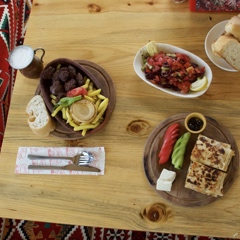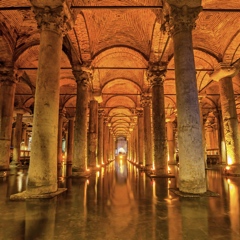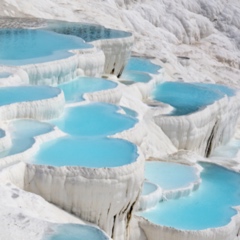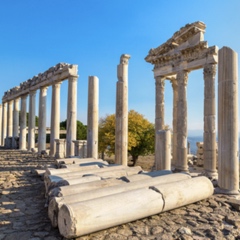The Bosphorus village of Ortaköy was a popular summer resort in the 19th century. Today Ortaköy (OHR-tah-keuy) is part of metropolitan Istanbul, a fashionable place to live, winter or summer.
Though the Jewish orphanage is gone and the historic Etz Ahayim Synagogue building burnt in 1941, Ortaköy still has a synagogue, and many other historic Ottomansites are nearby: Dolmabahçe Palace, Yildiz Park and its kiosks (especially the Sale Kosku), and the great fortress of Rumeli Hisari.
GETTING THERE
Ortaköy lies just beneath the western pylon of the Bosphorus Bridge. Though the most pleasant way to reach it is by Bosphorus ferryboat from Eminönü, there are only a few boats per day. Most visitors come by taxi or bus; buses marked for Ortaköy or Bebek are best.
Etz Ahayim Synagogue is on the shore road (Ortaköy's main street) quite near the well-known Ortaköy Camii (mosque), to the south of the bridge pylon.
Riding northward along the shore road from Dolmabahçe and Besiktas, the shore road passes some palatial buildings (on the right-hand/east side), including the Çiragan Palace, now part of the Çiragan Palace Hotel Kempinski Istanbul complex.
Past the hotel the shore road travels between high walls and trees, finally entering the commercial district of Ortaköy. The synagogue is just at the point where the road bears to the right; coming by taxi, ask to be let out near the Ortaköy Camii. (If you find yourself at the Ayios Fokas Orthodox Church, you've gone 1-1/2 blocks too far.)
WHAT TO SEE IN ORTAKÖY
Etz Ahayim Synagogue, Muallim Naci Caddesi no. 38, is on the shore road just across from a little street named Muvakkit Sokak. Originally constructed in 1660, a disastrous fire destroyed the original synagogue in October, 1941. Luckily, the marble ark survived the fire and remains in place, in what is now the garden, as a historic monument. The neighboring midrash (study room) was converted for worship after the fire, and is now the synagogue.
Come out of the synagogue enclosure, turn left, then left again, and walk along Osmanzade Sokak toward the Bosphorus. This warren of little streets between the shore road and the Ortaköy Camii (mosque) is a popular district for artists and students. Galleries, art boutiques and antique shops are everywhere.
Along the shore, open-air cafés are crowded in good weather with people of all ages who've come to enjoy the sun, the view, and conversation. Besides the shore cafés, there are several more upscale places to have a meal or a snack, including the attractive Alaturka.
The Ortaköy Camii, officially known as the Büyük Mecidiye Camii, was built in 1854 by Sultan Abdulmecit to replace an earlier mosque from 1714. The sultan used the same architect on this mosque as on the elaborate Dolmabahçe Palace. You can visit the mosque whenever it's open, although it's best not to visit at or shortly after prayer-time (the time of the muezzin's call).



